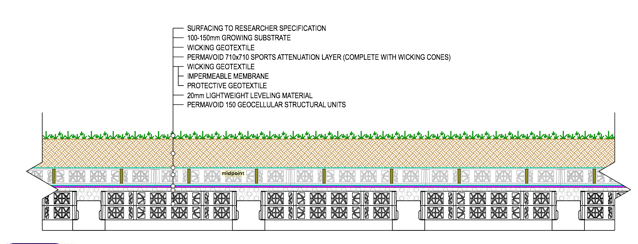Investigation of green roofs as an ecological tool in combating urbanisation, improving biodiversity and providing wildlife stepping stones
Funder
Innovate UK
Value
£135,000
Duration
November 2016 to April 2019
Collaborator
SEL Environmental
Team
Dr. Steve Coupe, Dr. Liz Trenchard, Sophie Barron-West and Ben Shuttleworth
Project objective
The aim of this two year KTP project is to investigate the value of water managed green infrastructure in urban areas to improve biodiversity.
Objectives:
- Combine engineering and ecological practices together to overcome common challenges faced by green roofs and platforms.
- To use novel engineering products and designs to create high quality habitat which can be measured to determine ecological impact.
- Recommend strategies to improve biodiversity in urban areas and reduce the negative ecological impacts of habitat fragmentation.
Impact
This project will assist in the design, testing and installation of a new range of water managed green roofs, which will provide green space, designed with biological diversity in mind. Lightweight roof platforms will be based at the Centre for Agroecology, Water and Resilience to showcase native plants and wildflowers. Working in collaboration with SEL, a leading UK company in sustainable urban drainage, we hope to create green spaces that people and wildlife both benefit from. The intelligent water management systems developed by SEL will aid in producing a green roof with far wider scope for biodiversity by negating the risk of drought, which is a common issue on conventional green roofs. By eliminating the environmental challenges we will be able to create high quality habitat which reflects local wildlife rich areas. This habitat replication is crucial in the investigation of wildlife 'stepping stones' or 'corridors' and will allow quantitative research into the true value of green roofs and how they may alter wildlife populations within urban environments. By sampling the invertebrate population on the roof, conclusions will be drawn as to the ecological health, practical benefits and conservation viability of such green infrastructure. The data gleaned by this research will also contribute to the ongoing investigations and ecological solutions regarding the threat of urbanisation and loss of biodiversity.



